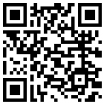
在类似Unix的操作系统上,troff命令执行排版功能并格式化文档。 它是AT&T为Unix开发的文档处理系统的主要组件。 本文档介绍了troff的GNU / Linux版本。
查看英文版
1 troff 运行系统环境
2 troff 语法
3 troff 说明
4 troff 例子
Linux
troff [-abcivzCERU] [-d cs] [-f fam] [-F dir] [-I dir] [-m name] [-M dir]
[-n num] [-o list] [-r cn] [-T name] [-w name] [-W name] [file ...] 查看英文版
troff格式化打印机和字符终端的文本,并且是Unix历史上最重要的软件之一。
像roff,nroff和groff一样,troff源自Jerome Saltzer为1960年代中期针对MIT的CTSS操作系统编写的名为RUNOFF的文本格式程序。名称RUNOFF来自短语“要运行文档”,意思是定稿或准备发布或展示。
RUNOFF的后续迭代称为rf,然后称为roff,最终在Unix上的PDP-7上编写了一个版本的roff。最终,它演变为nroff(“较新的roff”),然后演变为troff(“排字机”)。传说中的Brian Kernighan最终重写了troff,使其语法更加灵活,并将其设计为与设备无关。
尽管多年来诸如LaTeX之类的其他排版软件包已经获得了广泛的使用,但是troff仍在Unix中广泛使用,并且是man的默认类型格式化程序。
本文档适用于troff命令的GNU版本,它是groff软件包的一部分,通常在Linux上使用。
| -a | 生成排版输出的ASCII近似值。 |
| -b | 显示每个警告或错误消息的回溯。此回溯应该有助于跟踪错误原因。回溯中给出的行号可能并不总是正确的,因为troff的行号概念会被as或am请求混淆。 |
| -c | 禁用颜色输出(在兼容模式下始终禁用)。 |
| -C | 启用兼容模式。 |
| -dcs, -dname=s | 将c或name定义为字符串s; c必须是一个字母的名称。 |
| -E | 禁止troff的所有错误消息。请注意,这不会影响使用tm或tm1请求的宏程序包将消息输出为标准错误。 |
| -ffam | 使用fam作为默认字体系列。 |
| -Fdir | 在目录(或目录路径)的dir中搜索子目录devname(其中name是设备的名称)以及DESC文件和字体文件。在所有其他字体目录之前扫描目录。 |
| -i | 处理所有命名的输入文件后,读取标准输入。 |
| -Idir |
此选项可用于将目录添加到文件(在命令行上的文件和在.psbb请求中命名的文件)的搜索路径。搜索路径用当前目录初始化。可以多次指定此选项。然后按照指定的顺序搜索目录(但在当前目录之前)。如果要使当前目录在其他目录之前被读取,请添加-I。在适当的地方。 不对具有绝对文件名的文件执行目录搜索。 |
| -mname |
读入文件“ name.tmac”。如果找不到,则尝试使用“ tmac.name”。它将首先在以下位置搜索:
|
| -Mdir | 搜索宏文件的目录(或目录路径)dir。将在所有其他宏目录之前对其进行扫描。 |
| -nnum | 为第一页编号。 |
| -olist | 仅输出列表中的页面,列表是页面范围的逗号分隔列表; n表示打印页面n,m-n表示打印m到n之间的每页,-n表示打印每页直到n,n-表示从n开始打印每页。打印列表中的最后一页后,troff将退出。 |
| -rcn -rname=n | 将数字寄存器c或名称设置为n; c必须是一个字符名称; n可以是任何troff数值表达式。 |
| -R | 不加载troffrc和troffrc-end。 |
| -Tname | 为设备名称而不是缺省ps准备输出。 |
| -U | 不安全模式。这将启用以下请求:open,opena,pso,sy和pi。出于安全原因,否则将禁用这些潜在危险的请求。还将当前目录添加到宏搜索路径。 |
| -v | 打印版本号。 |
| -wname | 启用警告名称。可用的警告在下面的“警告”部分中进行了描述。例如,要启用所有警告,请使用-w all。允许使用多个-w选项。 |
| -Wname | 禁止警告名称。允许使用多个-W选项。 |
| -z | 禁止格式化输出。 |
troff可以给出的警告分为以下几类。与每个警告关联的名称由-w和-W选项使用。该数目由警告请求和.warn寄存器使用;允许按位组合始终为2的幂(可以将任何两个代码加在一起组合以创建唯一的数字)。
警告,按位列出:
| bit | code | warning |
|---|---|---|
| 0 | 1 | char |
| 1 | 2 | number |
| 2 | 4 | break |
| 3 | 8 | delim |
| 4 | 16 | el |
| 5 | 32 | scale |
| 6 | 64 | range |
| 7 | 128 | syntax |
| 8 | 256 | di |
| 9 | 512 | mac |
| 10 | 1024 | reg |
| 11 | 2048 | tab |
| 12 | 4096 | right-brace |
| 13 | 8192 | missing |
| 14 | 16384 | input |
| 15 | 32768 | escape |
| 16 | 65536 | space |
| 17 | 131072 | font |
| 18 | 262144 | ig |
| 19 | 524288 | color |
| 20 | 1048576 | file |
说明:
| 警告 | 代码 | 说明 |
|---|---|---|
| break | 4 | 在填充模式下,无法折断的线的长度小于线的长度。默认情况下启用。 |
| char | 1 | 不存在的字符。默认情况下启用。 |
| color | 524288 | 与颜色相关的警告。 |
| delim | 8 | 缺少或不匹配的结束定界符。 |
| di | 256 | 在没有当前转移的情况下使用不带参数的di或da。 |
| el | 16 | 使用el请求,没有匹配的请求。 |
| escape | 32768 | 无法识别的转义序列。当遇到无法识别的转义序列时,转义字符将被忽略。 |
| file | 1048576 | 指示缺少mso请求的文件。默认启用。 |
| font | 131072 | 不存在的字体。默认情况下启用。 |
| ig | 262144 | 请求忽略的文本中的无效转义符。当这些条件没有出现在忽略的文本中时,这些条件就是错误。 |
| input | 16384 | 无效的输入字符。 |
| mac | 512 | 使用未定义的字符串,宏和转换。当使用未定义的字符串,宏或转换时,该字符串将自动定义为空。因此,在大多数情况下,每个名称最多给出一个警告。 |
| missing | 8192 | 缺少非可选参数的请求。 |
| number | 2 | 无效的数字表达式。默认情况下启用。 |
| range | 64 | 超出范围的参数。 |
| reg | 1024 | 使用未定义的数字寄存器。当使用未定义的数字寄存器时,该寄存器将被自动定义为值为0。因此,在大多数情况下,对于使用特定名称,最多将给出一个警告。 |
| right-brace | 4096 | 使用\}(应为数字)。 |
| scale | 32 | 无意义的缩放指示器。 |
| space | 65536 | 请求或宏与其参数之间缺少空格。当遇到长度超过两个字符的未定义名称,并且该名称的前两个字符构成已定义名称时,将发出此警告。该请求或宏将不会被调用。发出此警告时,不会自动定义宏。默认情况下启用。在兼容模式下将永远不会出现此警告。 |
| syntax | 128 | 数字表达式中的可疑语法。 |
| tab | 2048 | 不当使用制表符。在期望数字的位置使用制表符,或在未加引号的宏参数中使用制表符。 |
还有一些名称可用于引用警告组:
| all | 除di,mac和reg外的所有警告。旨在涵盖适用于传统宏程序包的所有警告。 |
| w | 所有警告。 |
troff使用以下环境变量:
| GROFF_TMAC_PATH | 用冒号分隔的目录列表,可在其中搜索宏文件。 troff将先扫描-M选项中指定的目录以及标准目录(如果处于不安全模式,则为当前目录,主目录,/ usr / lib / groff / site-tmac,/ usr / share / groff / site-tmac, /usr/share/groff/1.22.2/tmac)之后。 |
| GROFF_TYPESETTER | 默认设备。 |
| GROFF_FONT_PATH | 用冒号分隔的目录列表,可在其中搜索devname目录。 troff将先扫描-F选项中给出的目录,然后再扫描标准目录(/usr/share/groff/site-font、/usr/share/groff/1.22.2/font、/usr/lib/font)中的目录这些。 |
| /usr/share/groff/1.22.2/tmac/troffrc | 初始化文件(在任何其他宏程序包之前调用)。 |
| /usr/share/groff/1.22.2/tmac/troffrc-end | 初始化文件(在任何其他宏程序包之后调用)。 |
| /usr/share/groff/1.22.2/tmac/name.tmac, /usr/share/groff/1.22.2/tmac/tmac.name | 宏文件 |
| /usr/share/groff/1.22.2/font/devname/DESC | 设备名称的设备描述文件。 |
| /usr/share/groff/1.22.2/font/devname/F | 设备名称的字体F的字体文件。 |
请注意,出于安全考虑,默认情况下,既不在当前目录中也不在主目录中搜索troffrc和troffrc-end(即使已指定-U选项)。如有必要,请使用-M命令行选项或GROFF_TMAC_PATH环境变量将这些目录添加到搜索路径。
查看英文版
troff myfile
处理文件myfile。
查看英文版
tabs | tac | talk | tail | tcopy | tty | tar | tbl | tcpdump | tcsh | time | tee | timex | telinit | telnet | test | top | touch | tput | tr | traceroute |
未知的网友